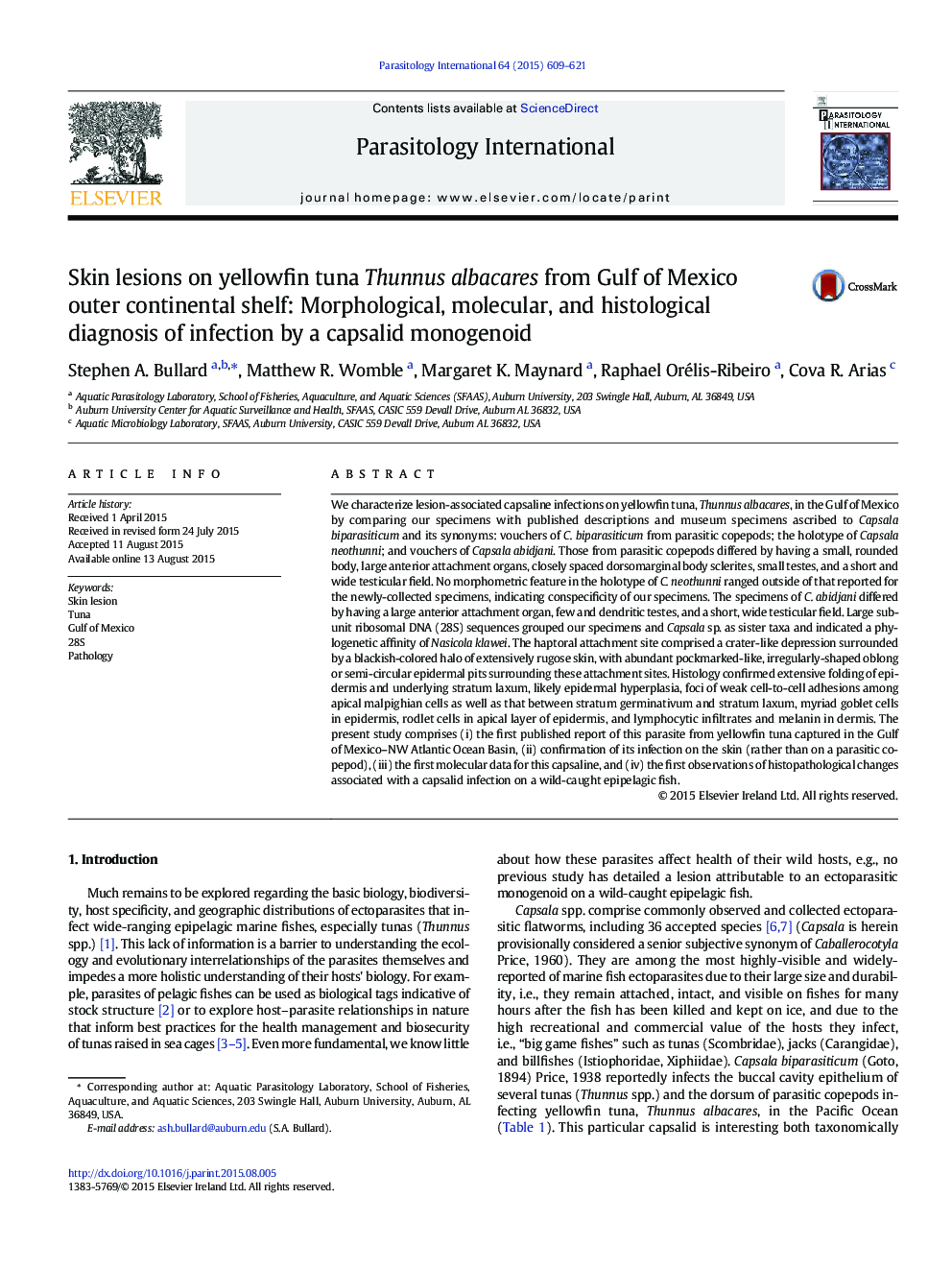| کد مقاله | کد نشریه | سال انتشار | مقاله انگلیسی | نسخه تمام متن |
|---|---|---|---|---|
| 3417783 | 1225471 | 2015 | 13 صفحه PDF | دانلود رایگان |

• We characterize capsaline infections on tuna with morphology, pathology, molecular biology.
• Morphological and molecular taxonomy suggest cryptic diversity among tuna capsalines.
• No evidence of secondary infection nor deep, ulcerative or hemorrhagic lesion observed.
• First report of this capsaline from Gulf of Mexico; first molecular data for this capsaline.
• Further diagnosis of fish lesions in Gulf of Mexico should be informed by parasitology.
We characterize lesion-associated capsaline infections on yellowfin tuna, Thunnus albacares, in the Gulf of Mexico by comparing our specimens with published descriptions and museum specimens ascribed to Capsala biparasiticum and its synonyms: vouchers of C. biparasiticum from parasitic copepods; the holotype of Capsala neothunni; and vouchers of Capsala abidjani. Those from parasitic copepods differed by having a small, rounded body, large anterior attachment organs, closely spaced dorsomarginal body sclerites, small testes, and a short and wide testicular field. No morphometric feature in the holotype of C. neothunni ranged outside of that reported for the newly-collected specimens, indicating conspecificity of our specimens. The specimens of C. abidjani differed by having a large anterior attachment organ, few and dendritic testes, and a short, wide testicular field. Large subunit ribosomal DNA (28S) sequences grouped our specimens and Capsala sp. as sister taxa and indicated a phylogenetic affinity of Nasicola klawei. The haptoral attachment site comprised a crater-like depression surrounded by a blackish-colored halo of extensively rugose skin, with abundant pockmarked-like, irregularly-shaped oblong or semi-circular epidermal pits surrounding these attachment sites. Histology confirmed extensive folding of epidermis and underlying stratum laxum, likely epidermal hyperplasia, foci of weak cell-to-cell adhesions among apical malpighian cells as well as that between stratum germinativum and stratum laxum, myriad goblet cells in epidermis, rodlet cells in apical layer of epidermis, and lymphocytic infiltrates and melanin in dermis. The present study comprises (i) the first published report of this parasite from yellowfin tuna captured in the Gulf of Mexico–NW Atlantic Ocean Basin, (ii) confirmation of its infection on the skin (rather than on a parasitic copepod), (iii) the first molecular data for this capsaline, and (iv) the first observations of histopathological changes associated with a capsalid infection on a wild-caught epipelagic fish.
Figure optionsDownload as PowerPoint slide
Journal: Parasitology International - Volume 64, Issue 6, December 2015, Pages 609–621